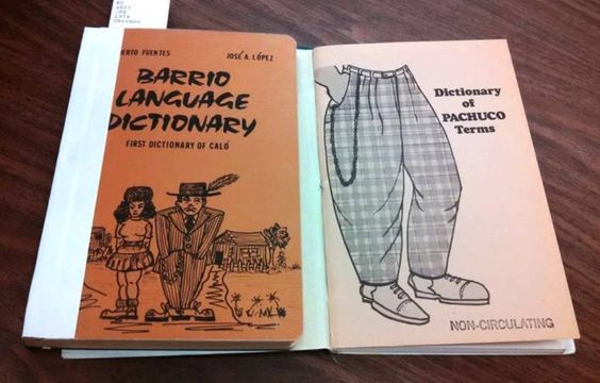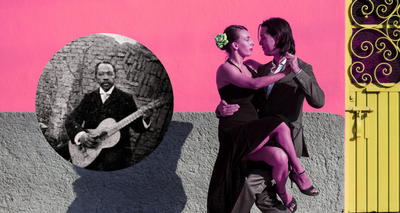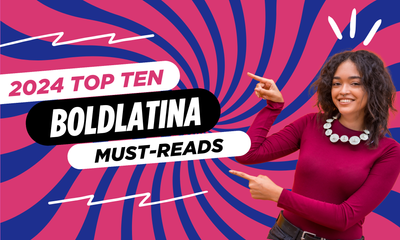Selena Gomez hosted Saturday Night Live on May 14, and whenever a Latina hosts or appears on a mainstream, iconic show like SNL, we take it as a win for us. However, her Latina chola skit alongside the only Latina cast member on the show, Melissa Villaseñor, left many offended. The segment was called “A Peek at Pico,” and featured two Latina cholas from Pico Rivera as news show hosts, hosts who were inept and limited in their knowledge.
Instead of calling a guest a librarian, they referred to her as someone who “hangs at the library with the books.” They don’t know how to interact with a correspondent who wants to share the latest news with them. These ladies have to have things explained to them and are portrayed as dumb. And why? Simply because they are cholas.
The SNL Pico Rivera skit was funny to me, not hilarious. But Melissa Villaseñor & Selena Gomez reminded me of White washed Latinas that always made fun of actual impoverished cholas from a distance in their suburbs, but now appropriate chola culture cuz it’s hip.
— Denise De La Cruz (@_deedelacruz) May 16, 2022
As LatinaMedia.Co’s co-founder pointed out, it’s sad when what little representation we as Latinas get on television is used to show us as negative stereotypes. It’s one thing to appreciate chola culture, and quite another to appropriate it. To disrespect it, especially in front of an audience who is majority white. To assume that cholas are just negativity when they are strong women who are proud of who they are and where they come from. But this isn’t the first time chola culture has been appropriated, and exploited. In fact, here are the things that you see everyone copy when they want to look and act like, and be a chola.
The Jewelry
Ver esta publicación en Instagram
Gold nameplate necklaces. Huge hoop earrings. Religious medals. Old English everything. All of these things are associated with cholas, and are worn by those who want to emulate the golden look for themselves. While we can’t attribute the origin of hoops with Latinas (hoop earrings came from the Nubian civilization in Africa, way back in the fourth century), it is an accessory that is closely tied to our culture(s), especially the chola one. As Sandra E. Garcia and Ruby Pivet mentioned in their respective articles on hoops, they are an integral part of Latinx culture, one that we are denigrated for, but are often appropriated by non-Latinxs as an edgy trend (without criticism or assumptions of what wearing hoops means for them).
The Makeup
Ver esta publicación en Instagram
Another signifier of the Latina chola lifestyle and aesthetic is a specific style of makeup. Bold, thin eyebrows, winged black eyeliner (although black liner originated in Ancient Egypt and Mesopotamia as early as 10,000 BC), and dark lipstick/dark lipliner is the look that has been associated with pachucas since the 1940s (and later cholas). While many of us non-chola Latinas have worn cholas-style makeup to look and feel fierce (and we have to reflect on whether, even though we are fellow Latinas, are we also appropriating?), many others wear it as a passing trend, or even worse, as part of a Halloween costume. When someone’s culture is worn as a costume for a night of partying, with no regard for the actual everyday people it comes from, it’s disrespectful–and wrong.
The Clothing
View this post on Instagram
When you put on a Pendleton flannel, which you only button on the top button; a white ribbed tank (a.k.a. a wifebeater); a pair of Dickie’s pants, and Nike Cortez sneakers, you are wearing pieces of Latina chola culture. These garments are also a part of a rebellion, which began with the pachucas of the 1940s. As Barbara Calderón-Douglass mentions in her article, “The Folk Feminist Struggle Behind the Chola Fashion Trend,” “they were a rebel subculture that rejected the assimilation into the white, hyper-patriotic spirit of WWII.” Like many other cultures, what cholas wear was a result of their socioeconomic background, location, and style. Proud Latina chola Mayra Ramirez aka Hellabreezy on IG describes why the cultural appropriation of chola style is problematic:
“Back in the day, we were mocked for looking different. Now, so many young girls want to emulate the look and have no idea of the cultural background or street politics associated with it. It’s easy for young privileged girls to want to have the look, but when they are done dressing up in their ‘chola costume,’ they don’t have to go back home to the hood and deal with discrimination, violence, and poverty… We can’t just brush the Aquanet off our hair, take our hoops off, and go back to normal suburban life like they can because this is our reality. We live this every day.”
The Language

HipLatina/Pinterest
If you’re using words like “vato,” “carnal,” and “orale,” you are speaking Chicano Caló, a type of slang that is a blend of Spanish Caló, Indigenous languages of modern-day Mexico such as Nahuatl, and English (it originated in the Southwestern United States). These words have been used by non-chola Latinxs, and non-Latinxs to look cool, tough, and/or gain street cred, without them being a part of their everyday vernacular. The same goes for adopting a Chicano accent when talking.
The Attitude
Ver esta publicación en Instagram
One thing you can’t take away from Latina cholas is that they’re fierce AF. They are tough, strong, and loyal to the place where they come from, the people in that area, and their family. They stand up for themselves and know how it is to live in survival mode. That fierceness is no doubt an inspiration to us all, especially other Latinas. We appreciate it, but remember, there is always a fine line between appreciation and appropriation, so tread carefully, inform yourself about the culture(s) you want to garner inspiration from, and educate others on what you learn.






